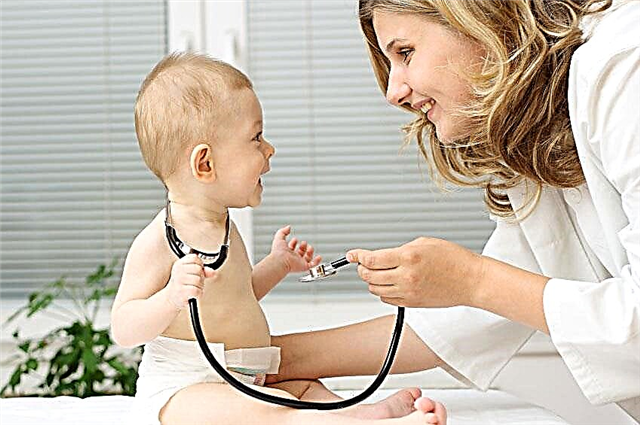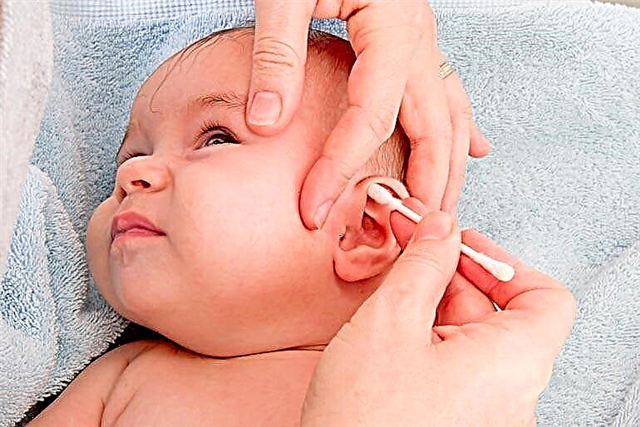
Even very cautious women who are used to planning such important events as conceiving a child can fall into the "trap" of their own body and become pregnant unexpectedly some time after giving birth. Repeated pregnancy will not always be desirable and permissible, and therefore spouses may face a difficult moral choice. In this article, we will look at how long the reproductive health of a new mother is restored and how to plan a new pregnancy after childbirth.
Is it possible to conceive immediately after the birth of a baby?
It is difficult to say why, but there is a popular belief that a woman after childbirth remains sterile for some time, that is, she cannot become pregnant. This is a dangerous delusion that has led more than one hundred young mothers to the gynecologist's offices in a short time after giving birth for an abortion. There is no definite answer to the question of whether it is possible to become pregnant after childbirth. Pregnancy in the absence of contraceptive measures will definitely occur in a healthy woman as soon as her reproductive system regains its functions - the ovaries will begin to work in full force, the eggs will ripen, ovulation will occur.

The timing is individual. For some women, the cycle is restored within a month, while for others - after six months or more, there are those who take more than a year for this process. But it is a big mistake to try to count recovery from the moment of the first menstrual period. Menstruation completes the female cycle, and does not begin it, the endometrium is rejected with blood secretions when the maturation of the egg has already occurred and fertilization has not occurred. That is, a couple of weeks before the first menstruation, a woman is already fertile and, according to the laws of nature, may well conceive a new life.

The problem is that no one knows exactly when the very first periods will come. The process of restoring the menstrual cycle after childbirth takes place for different times, it is influenced by many factors:
- method of delivery - cesarean section or natural childbirth;
- features of the postpartum period, the presence or absence of complications;
- breastfeeding or lack of it;
- individual characteristics of a woman's body;
- age and health status.
After a cesarean section, the recovery of the cycle may take slightly longer than after physiological birth through the vaginal reproductive tract. If the postpartum period turned out to be complicated, then the restoration of the female cycle may also be delayed. With breastfeeding, provided there are no hormonal disturbances, the cycle is restored only a few months after childbirth, and at a young age, mothers acquire fertility more quickly than “mature” mature women.
Features of cycle recovery and fertility
Immediately after childbirth, regardless of the way in which they occurred, profuse blood discharge with clots is released. These are not monthly, and these discharge cannot be taken as a starting point. Discharge after childbirth is called lochia. This is the process of cleansing the uterine cavity from blood, particles of the membranes and placenta. During childbirth, the placenta is born by itself or is manually removed. In a caesarean section, the "baby seat" is removed by the surgeon. In any case, the integrity of the blood vessels is violated, which for a long nine months managed to grow together and turn into a single circulating system - "mother-placenta-fetus".

Thus, after childbirth, there is a rather extensive placental wound inside the uterus. It is she who bleeds as the uterus contracts to its previous size. Lochia can last during the entire recovery period, that is, up to 6-8 weeks after childbirth. After physiological birth, they usually end a couple of weeks earlier than after surgery.
During the period of excretion of lochia after any childbirth, sexual life is contraindicated, since the uterus is defenseless against infections that can penetrate during sexual intercourse.
If the spouses are sensible and responsible people, if they value women's health, they do not violate this prohibition and it is not worth talking about the probability of getting pregnant during this period. Those who violate the prohibition must be vigilant - pregnancy is possible.

When the uterine cavity is completely cleared, the discharge becomes normal. By this time, the hormonal background is usually significantly rearranged. In theory, from this point on, the female reproductive organ is ready to accept the fetus again. But this is only in theory. In practice, a woman needs more time for the nervous and endocrine systems to recover, so that the organs of the reproductive system return to their usual normal functioning.
At a certain moment, the balance of hormones comes to the correct ratio and in the ovaries, which did not work as intended during pregnancy, the process of oocyte maturation begins again in them, which is released on the day of ovulation. If conception does not occur, menstruation begins after two weeks.

The first menstruation after childbirth or cesarean is almost impossible to confuse with anything else. There is no need to think that menstruation will again "come" on the days on which they "came" before the conception of the baby, because now the cycle is shifting. It is for this reason that after the end of lochia, when a woman resumes sex life, it is important to use barrier contraceptives (condoms) even before the first menstrual period, since it will be almost impossible to determine ovulation before the first menstruation.

The first menstruation is a signal that the female reproductive system has returned to its usual rhythm. The first menstruation may be slightly shorter than before, and more lean, but after 2-3 months the cycle returns to normal.
The period of recovery of fertility after childbirth is affected by the psychological state of the young mother - with postpartum depression, recovery is significantly slowed down. The lifestyle of a young mother is also considered an important factor - if she looks like a zombie due to constant lack of sleep and night feedings, then it is premature to talk about the restoration of sexual function. It also plays a role whether she is breastfeeding the baby or whether the baby is artificially fed.
How does breastfeeding affect?
A woman who, for some reason, does not breastfeed, theoretically can recover and gain fertility again within a month and a half after giving birth. It is this factor that must be taken into account when resuming sexual relations with a partner after the birth of a baby.

Breastfeeding imposes its own adjustments on the ability to conceive again. Breast milk production is a complex hormonal process. The pituitary gland of a woman during the period of feeding the baby produces a large amount of prolactin. This hormone is a component of breast milk and regulates lactation in general. And here there is no longer a big difference - the woman gave birth herself or she had a cesarean section. Lactation in both those and others proceeds according to the same hormonal laws.
Prolactin suppresses the production of progesterone and partially blocks the production of estrogen. Because of it, the sex glands cannot work normally and the maturation of the egg usually does not occur. No egg - no ovulation, no menstruation.

But feeding feeding is different. One woman feeds her baby every 2 hours and uses only her mother's milk, not feeding the baby with artificial formula, the other combines breast milk with an adapted formula. In the first, menstruation will not come longer, since more prolactin is produced with frequent attachment to the breast. But the second mother may well become a "victim" of a sudden and unexpected pregnancy, even during the period of breastfeeding. The fact is that the low production of prolactin gives progesterone a chance to develop, and the process of restoring ovarian functions may well start, while the woman will not feel anything unusual.
Usually, in the first six months of a baby's life, pediatricians recommend only breastfeeding, and only then they advise gradually introducing complementary foods. From this moment, the baby begins to consume a little less milk, which again increases the likelihood of spontaneous cycle recovery due to a decrease in prolactin levels and the onset of pregnancy.

Monthly after the introduction of complementary foods in the diet of the toddler most often occurs after one and a half to two months, but fertility returns earlier by at least 2-2.5 weeks. And this must be remembered, especially if a new pregnancy is not yet included in the family's plans.
Risks
The female body needs time to recover, because bearing a baby is a serious job and a big load. After childbirth, especially if they were difficult, with a long recovery period, complications, it is better to take a break to allow all organs and systems to return to their usual rhythm of work.

but a pregnancy that occurs even within a year after physiological birth is not as dangerous as a pregnancy that occurs too early after a cesarean section.
After an operative delivery, it should be taken into account that the process of forming an internal scar on the uterus requires a separate time. It normally takes about 2 years. It is this period that is considered the minimum break between the previous pregnancy and the onset of a new one. An insolvent scar can greatly complicate the course of a new gestation - there is a risk of its divergence, rupture of the uterus both during pregnancy and in childbirth. There is a possibility of developing placental insufficiency, abnormalities in the development of the placenta, chronic oxygen starvation of the baby, and delay in its development.

No matter how the previous childbirth was carried out, a hasty subsequent pregnancy creates an increased risk of early miscarriage, a depleted inner functional layer of the uterus, which also takes time to recover, can adversely affect the formation of the placenta, which can lead to intrauterine death of the baby, to the birth of a small crumbs.
The likelihood of premature birth increases more than 2.5 times, even if the first trimester, full of dangers and fears, can be successfully overcome.
This does not mean that a woman will not be able to leave pregnancy and give birth to a baby, because the birth of weather is not such a rare occurrence, especially after the physiological first birth. It's just that the risks will be higher and the pregnancy may not proceed as easily as doctors and future parents would like.

How to avoid pregnancy?
Given that the truth is harsh and unlike the myths about pregnancy after childbirth, knowing that pregnancy can very well occur with unprotected sexual intercourse even during lactation within a few months after the birth of the child, the couple should definitely discuss contraceptive measures. Even if the subsequent child is desired and the spouses want weather children, the woman needs to take care of her health, because it is not enough to endure and give birth - children need a healthy and full of strength mother who can raise and educate them.
In the first month after childbirth, even if they have passed without complications, one should refrain from sexual intercourse. When the lochia is over, you can return to sex again, but with a condom. It is this contraceptive that is considered the best, in any case, until the period of return of full menstruation.
After the second or third menstruation, a woman is recommended to visit a gynecologist in order to exclude late complications and to discuss contraceptive measures that would suit both partners, because a simple and reliable condom is not always welcomed by married couples.


How much to protect is a rhetorical question. Only the spouses themselves and the doctor who monitors the woman's health can answer it. In the absence of complications, it is not recommended to become pregnant again in the interests of the unborn child after physiological childbirth for at least a year - one and a half years. After a cesarean section, the period is longer - from 2 years.
A new pregnancy too soon after the previous one may require the woman to wean the baby. When the nipples of the mammary glands are stimulated, a certain amount of oxytocin is produced, which increases the likelihood of a miscarriage. Some babies, feeling that the familiar and familiar taste of mother's milk has changed (against the hormonal background during a new pregnancy), refuse to breast themselves.
It is also important to remember about psychological and emotional exhaustion. A child requires a lot of strength and attention, and a new pregnancy can significantly complicate the communication of a mother with a baby, because hospitalization may be required for medical reasons, a small child who depends on his mother in everything will remain in the care of relatives, and this is during the first year of the baby's life - not quite what he needs.

The choice of methods and ways to avoid unwanted pregnancy today is large. These are oral contraceptives, an intrauterine device, and long-term injectable contraception. Which way to choose, you need to decide with the gynecologist. If a woman plans to become a mother again, it is important for her not to "overdo it" with hormonal contraceptives, and also to exclude any possibility of intrauterine manipulations - curettage, abortion. Therefore, the method should be reliable, safe and gentle, a woman should not have contraindications to it. To choose one, taking into account all individual characteristics, only a qualified doctor can.

For more information on how many months after childbirth you can become pregnant again, see the next video.



